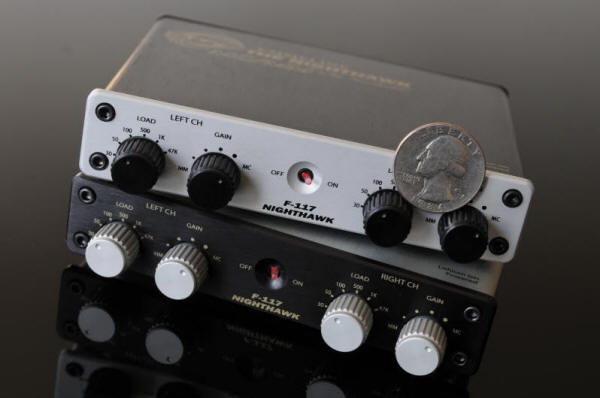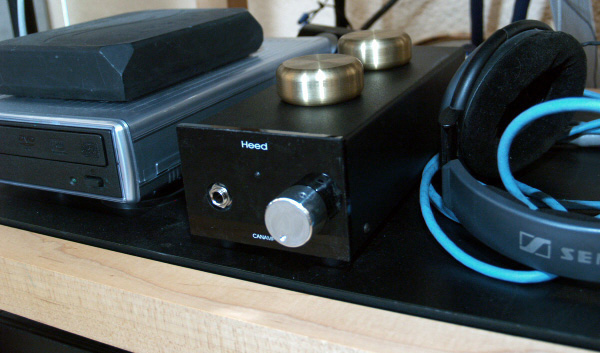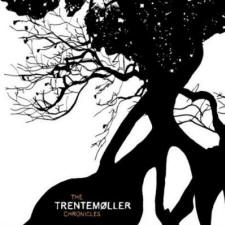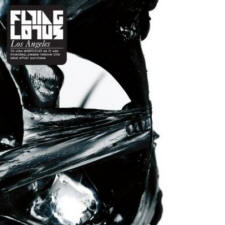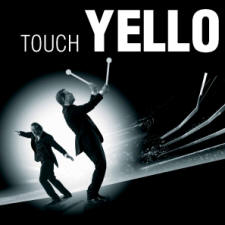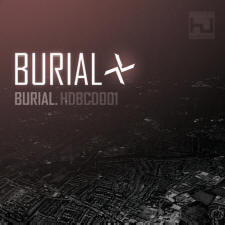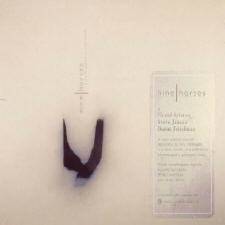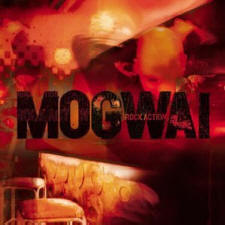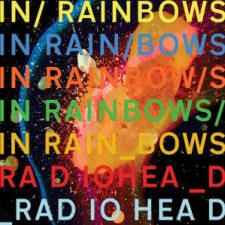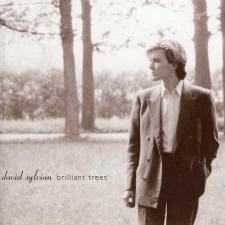|
You are reading the older HTML site Positive Feedback ISSUE 49may/june 2010
Audio Ramblings - Diminutive
Electronics from Silicon Arts, the
Heed CanAmp, Ray
Samuels F-117 Nighthawk Phonostage, and a New Line
of Cables from Q
The cliché of big things come in small packages is never more apropos than with the various products I will be Rambling about here… the diminutive electronics from Silicon Arts, the Heed CanAmp, Ray Samuels F-117 Nighthawk phonostage, and a new line of cables from Q; all different for sure and all really quite right musically. But what really sets them apart is how much fun you will have with your music… yeah big boxes work too, but come on; toss me something as little and simple as any of these and then the real fun begins. I used the Silicon Arts threesome (better known as the Silicon Arts Design Next Class Si2 Micro Integration Line) for an extended listen and found them to be as Michael Weschberg reported in a previous PFO review… musical and nice in all respects. For sure they are not necessarily the right component for every system, nor are they all that "affordable" when one considers their overall simplicity, options, and size and what it takes to purchase each unit. Meaning that, yeah, they would appeal to a far wider audience if they sold for half their asking price and perhaps had several times the power, but then again, you can't get everything you want! On the other hand, I did get what I wanted from the threesome and that was a lot of fun. Driving the Reimer Tetons—long gone company, but still a wonderful product that at 94dB and 8 ohms—is a doable load for the Silicon Arts Design Next Class Si2 Micro Integration Line Power Amplifier ($1420) at 10-watts into 8-ohms. Perfect match made in audio-heaven? Well not 100% but sheesh, this baby sang with the Reimers producing a very big sound that had just about all one could want in terms of overall sonics. Sure the combo gave up a bit in terms of dynamics and slam, and yeah the bass was not as well controlled as realized with the Clayton M200s (200-watts Class A) but then gee… what did you expect? I would characterize this as very, very good solid-state sound that obviously due to price and size constraints, will suffer from subtly/slight omissions but not the dreaded 'sins of the commissions'. Sins like this I can live with.
What I heard from the threesome (which is how I used the line as I figured that is how they will no doubt be sold since they are really three of a kind) was a grain-free presentation that stressed quality over quantity. Sure they lacked ultimate extension and resolution, but damn it all the same, they rocked and placed the music squarely in the room. Being minimal and in some respects more reflective of the 'old-school' approach (NOS DAC chips, a simple class AB amplification stage, and DC power from wall-wart supplies) you get a wonderful sense of purity and natural-ness to the music. Somewhat sweet, though not in the least euphonic, the threesome does their best to get out of the way of the music so one hears what is in the grooves, in the bytes, or whatever. These are fun to listen through as the size/form factor is clearly not representative of their sound or one's listening experience. They play way bigger than one would expect based on what one sees sitting there on the stand. I had so much fun trying to convince myself and others who dropped by for a listen that, yes, it is those three smallish boxes doing all that! Mated with the new digital cable from Black Cat Audio (nice and at only $128 for a 1.5 meter it is a no brainer for sure, but more on that in another Ramblings), the DAC worked flawlessly. That was with the digital signals being feed from the Mac through the Sonicweld Diverter and then to the DAC, perhaps not the best configuration as the Diverter and USB Cynosure cable costs more than all three of the Si2 Micro's combined. In this set-up, the overall sound of the three did remind me of the Red Wine Isabellina I had here a while ago in that it is quite nice and solid sonically-wise with no grit or grain; a true reflection as heard from that SOTA example of the NOS sound. There is little or actually nothing that I can put a finger on to detract from the music other than yeah, it is not as resolving nor as 'complete' as my regular digital playback components—but then I would never expect it to be. Even so, heck man this set-up is sweet. And again... dude, those three little pieces is making all that music! Swap out the Diverter and Cynosure USB cable for the Bridge from Halide Design (formerly Devilsound) and while the music retained that wonderful sense of purity and 'rightness', at $450 the Bridge makes more sense economically. Yeah, it is not as 'substantial' sounding as the Diverter/Cynosure combo, but it gets things right just the same, and in a way that is more in-line with that of the Si2 Micro Line's presentation. But more on the Bridge later in another Ramblings. So if you missed this earlier, with the Si2 Micro Line threesome, I found little if anything to complain about other than their size and weight—literally and figuratively in musical terms—as they worked for several weeks without a hiccup. Size in the sense that gee… what do I do with all that space and weight in that yeah, they are light so you need to hold them down or a heavy cable will flip them like a turtle. The linestage ($1580) is wonderfully simple with its two inputs and rotary volume knob... and it sounds clean and pure. They do not get warm in the least, nor do they appear to require AC conditioning nor any attempt to isolate them from room resonances. Yes, they do sound their best when left on and especially so after a good day or so, but then they draw so little power this should not be an issue. Simple and elegant, the threesome is a wonderful group when used together and when used with the right speakers. Which I guess is the issue here… you got to have the right speakers to make them sing. And they suggest the right cables as well. Well right in terms of length which would suggest that perhaps then certain electrical parameters are preferred to get the signal from A to B. So which cables? How about those from Q? Not a common household name, Q is a line being offered by... Q and features a refreshingly 'green' emphasis on being… well, green. Not 'green' in being actually 'green', but 'green' in terms of the environment and being simple and clean. The Q cables (speaker and interconnects) are handcrafted, limited-production cable made with ultra-fine gauge, type-2 litz-wire and cotton jacketing configured in a four-conductor, self-shielding Milloit braid. They are packaged in simple paper sleeves and from all appearances the complete 'product' is elegant and well thought-out.
Oh, and it is… elegant and well thought-out that is, as the Q cables offer a presentation very much like that of Silicon Arts Design's Next Class Si2 Micro Integration Line: clean, pure, and with little if any coloration or character to take one away from one's music. Not light and lean mind you, just not full, heavy, or whatever you can come up with in terms of some sonic trait that is either needed or not needed in the music at hand. Nice. And yeah, being so simple and of a "less is more" approach, what a perfect pairing with the "in need of a simple and short cable" and a "less is more" approach as that found in the Silicon Arts Design Next Class Si2 Micro Integration Line. Now at first I was using a combination of Kubala-Sosna Emotions/Nordost Quatro-fil with the Si2 Micro Line and yeah, this worked mighty fine. Wonderful sound and all, but gee… the cables cost several times that of the components and are massive in comparison—so massive that I needed to weight the Si2 Micro Integration Line down so that they sat flat. What to try that would make sense? Oh, yeah cool... the new Q stuff. At $325 for a meter (interconnects) and $410 for 2-meters (speaker cables) these were the cats' slippers. Wonderfully comfortable sonically and easy on the pocketbook, the Q cables are a perfect match for the diminutive threesome from Silicon Arts in every respect.
The Q cables are light as a feather and remind one of shoestrings in how they feel and lay about. They are extended at either end and appear to have no reservations in presenting the full spectrum of whatever you are playing back at the time—meaning that they are dynamic, resolving, detailed, rich, lean, dark, light, open, closed… you know, they sound like the whatever it is you are playing. These are not tone controls, but neither are they analytically sterile or whatever one takes for being neutral that triggers the shudder of fear when one uses that term. No the Q cables just pretty much get out of the way of one's music and you hear what's there. Now that is Q'ool! What is even cooler is the F-117 Nighthawk phonostage from Ray Samuels Audio. Holy crap, this $700 back-pocket phonostage is simply killer! Especially when mated with the Q cables… simple and elegant. Nothing added to get in the way. I realize that has been said to death, but come on man… for the money this stuff is so ridiculously good I am not sure you really need to spend all that much more. Or after hearing it would even want to… F-117 Nighthawk phonostage is a rechargeable MC/MM phono stage based on a lithium ion battery that when fully charged will give you a good 5-6 days of play back at 8 hours per day. The unit only works when un-plugged from the charger meaning that it is truly running off the battery when playing. The F-117 Nighthawk has two rotary switches (one for each channel – the unit is dual mono in design and construction) that feature six increments of gains from 40dB-74dB per channel along with two additional rotary switches featuring six loads options (30, 80, 100, 1K & 47K). Frequency response 5-100K and S/N around 78db with a THD of < 0.03%, and its output impedance is around 60 ohms. The unit is small measuring a minuscule 4.4" x 4.25" x 0.8" and weighs a whopping 0.8 pound! I gave the F-117 Nighthawk about 120 hours of signal (via the RIAA reverse curve module from Hagerman) to break it in along with several days of being on.
The F-117 Nighthawk is as simple as one can get… but with a sound and presentation that is big, ballsy, dynamic, extended at either end, quiet, and grain-free. Oh, did I say that this is a killer phonostage and easily competes if not surpasses others that are say 4-5 times its price… let alone 20 times its size! Sweet and oh so musical the F-117 Nighthawk clearly sets a reference point for anyone wanting to hear something that reflects the better options out there in terms of analog playback. Seriously! I have had several analog guys here and everyone went nuts over how the F-117 Nighthawk presented what was in the grooves in a way that bested that heard from my reference Sutherland PhD. Which is damn fine, but yikers… at $795 how does Ray do it?
Paired (as ridiculously as this sounds) with my Transrotor 25/25/60 Leonardo turntable with a Shelter 901 MC cartridge LPs sound stellarly wonderful! The table, arm and cartridge costs like what… $5000? I mean come on… the 'built in the USA' F-117 Nighthawk should be embarrassed or at the very least offer up something to dismiss, but every time I tossed on an LP, this combo just sang. Background noise is what is on the LP or from the table—not from the F-117 Nighthawk as it is as quiet as a mouse, though it roars with the best of them. Meaning that yeah, this little guy has the bottom-end and control of something way bigger and badder and nary a hint of something you don't want to hear. You get color, tonality, richness, and resolution… you get music and at $795, crap, this little guy is staying here. True fun at the ultimate level of coolness. Can something be better? No doubt, but at this price and size… wow, let's be realistic and say… done deal. Ray, you the man! Amazing what one bright guy can do with the latest in circuits and micro-chips. Truth moment… I really do not listen all that much to headphones and no doubt my Sennheiser 580 'phones are not only a bit long in the tooth but would be considered out-dated by the serious can guys. But hey, they sound quite good with my Meier headamp, so I really did not care until I was asked to give a listen to the CanAmp from Heed Audio of Hungary ($495).
So I toss the little CanAmp into the system, give it a decent break-in and wow, this guy is more open and evenly right tonally than the Meier. I hear more of what is there when playing whatever back via the speakers and such and gee… this thing is nice. More music and more better. More resolution, more information, more spatiality and presence… yeah, more is more and not just more different, but clearly mo' betta. The Can Amp is simple and elegant in all respects: looks, design, circuit, etc. From the Heed site… "The CanAmp is a two-stage amplifier. While the first voltage gain stage is based on an integrated circuit of the highest audio pedigree, the second power gain stage is a single-ended, pure Class-A amplifier. It enables the CanAmp to drive virtually any headphones from 32 ohms up to 600 ohms. The unit has no internal wiring, and the signal path is kept to a minimum on its PCB. Its high-quality, 1 dB-tolerance Blue Alps volume pot goes through a further selection process during manufacturing to achieve an even tighter, 0.5dB tolerance." I should note that I am using a $1000 JPS Kaptivator AC cord on the CanAmp and feeding it directly from the Playback's RCA outputs and yikers, in all aspects this is way overkill, but again, this is a killer product. I can see why it is so popular and a great starting point for anyone getting into cans, but then again I see why so many stop here and just listen. The CanAmp is a quality headphone amp and compared to my older Meier Corda HA-2 (similarly priced when sold), there ain't much to say… the CanAmp runs circles around the Corda laughing as it does so. Not a pretty site, but the Can Amp is a clear winner in all respects. A common thread among these products is the overall simplicity in its design and the emphasis on short signal paths, choice of parts, and keeping things small… all will have a small impact on your finances and yet a substantially big impact on your musical enjoyment. Are they perfect or is there something better? For sure and yeah there are shortcomings, but these were more an issue of "who gives a rat's ass" when you consider the price of the product with respect to what I was experiencing. All are highly recommended. Heed www.heedaudio.hu US Distributor for Heed is Profundo www.profundo.us Silicon Arts www.siliconarts.jp US Distributor of Silicon Arts is Eastwind Imports www.eastwindimport.com Ray Samuels www.raysamuelsaudio.com A great place to buy Q cables is from audioexcellcence www.audioexcellenceaz.com A Postscript of Sorts I want to add that when reviewing gear or whatever, I don't have specific 'test' discs/LPs that I use to evaluate what is going on... no I just play music and listen. Whatever differences I experience is what I write about and since my system is my stuff and I listen to music quite a bit, whenever something replaces my own stuff, these differences are rather obvious... or not so obvious. Now I have taken some flack for this approach (as have a few other writers I know) as the typical reviewer uses the clichéd audiophile approved dozen that everyone knows to reference what is what. Well.. sorry, but I guess I am not the typical audiophile guy as I don't have those titles... don't really care for the music, so why would I want to listen to any of them over and over? Come on... please, "Keith, you really should go." So to appease the masses, here are few of the artists that I was listening to when reviewing the above components (and so you can sleep easier, I will continue do this in all future articles as well):
Trentemoller and Flying Lotus
Yello and Flanger
Burial and Badawi
Nine Horses and Mogwai
Massive Attack and Radiohead
him (Doug Scharin) and David Sylvian
|







